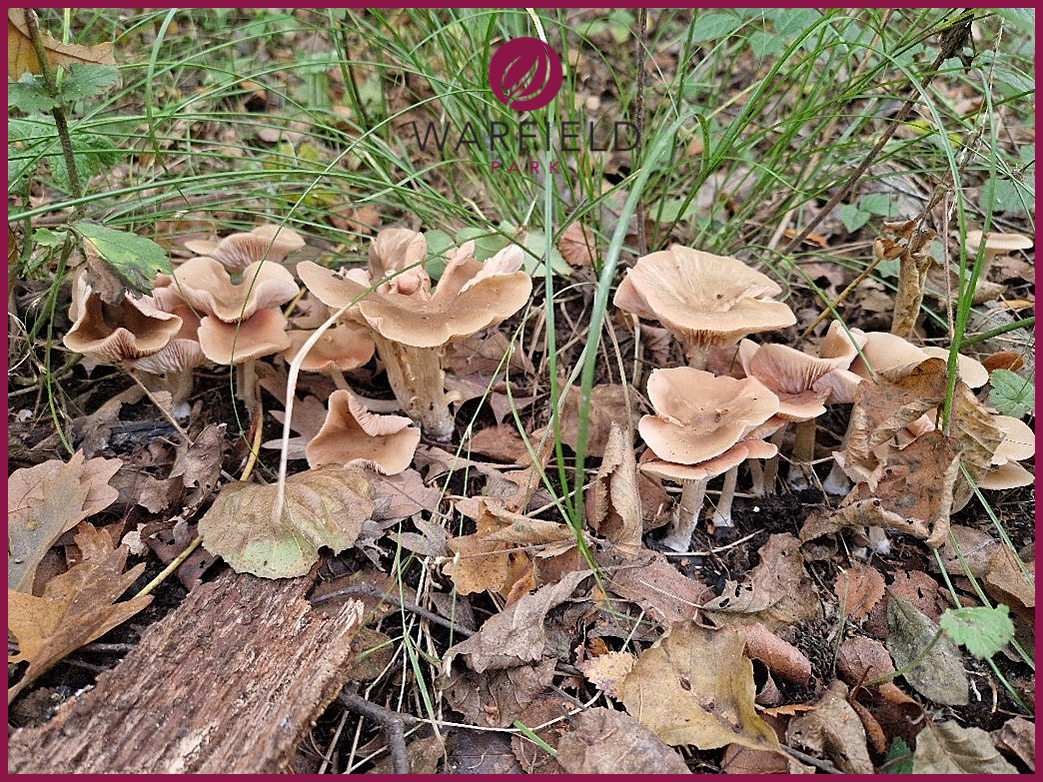
14 Nov Discovering Fungi at Warfield Park
At Warfield Park, we’re fortunate to be surrounded by beautiful natural spaces — from leafy woodlands to peaceful walking paths that change with the seasons. These green areas are not only home to a wide variety of wildlife, but also to a hidden world of fungi. If you take a stroll through our wooded walks after a spell of rain, you might spot mushrooms pushing through the soil, delicate brackets growing on fallen logs, or tiny colourful fungi decorating tree stumps. It’s a fascinating reminder of the rich, living ecosystem thriving right on our doorstep.Fungi: Nature’s Hidden Kingdom
Fungi are some of the most fascinating and misunderstood organisms on Earth. Neither plant nor animal, fungi belong to their own biological kingdom and are actually more closely related to animals than to plants. In the UK alone, scientists have identified over 15,000 species, though fewer than a third produce visible fruiting bodies like mushrooms, puffballs, and bracket fungi.
Where and When to Find Fungi
Fungi can be found all year round, but spring and autumn are prime seasons. The combination of warmth and moisture encourages fruiting bodies to emerge, transforming woodlands and grasslands into treasure troves of fungal life.
In the UK, the two main habitats for fungi are:
-
Woodlands – rich in decaying organic matter and shaded moisture.
-
Grasslands – especially older, undisturbed meadows.
Exploring these areas with a keen eye and a sense of curiosity can reveal a surprising diversity of shapes and colours.
At Warfield Park, we’re lucky to have some lovely wooded walks that are perfect for spotting fungi throughout the year. From tiny cup fungi on fallen branches to impressive bracket fungi clinging to old trees, our park’s natural areas offer a wonderful chance to discover these hidden gems up close—just remember to look carefully and tread lightly! A Word of Caution
While fungi are beautiful and intriguing, they’re best admired from a distance unless you’re trained in identification. Some species, including mushrooms that look harmless, can be highly toxic or even deadly. Always err on the side of caution and never consume wild fungi without expert guidance.Shapes, Smells, and Textures
Colour alone is rarely a reliable way to identify fungi. For example, the iconic fly agaric (Amanita muscaria) is easily spotted thanks to its red cap with white spots, while the lesser-known shaggy scalycap (Pholiota squarrosa) glows bright green under UV light.
Instead, look for distinctive shapes:
-
Cap-and-stem mushrooms
-
Stinkhorns
-
Trumpets
-
Cups
-
Clubs
-
Puffballs
-
Brackets
Each form tells a story about how the fungus lives, reproduces, and interacts with its environment.
Fungi and the Future
Beyond their ecological role as recyclers—breaking down dead organic matter—fungi are inspiring human innovation. The oyster mushroom (Pleurotus ostreatus) is now being used to grow sustainable packaging and insulation. Other species are showing promise in bioremediation, including the ability to break down plastics.
Whether you’re a nature enthusiast, a curious forager, or simply someone who appreciates the wonders of the natural world, fungi offer a glimpse into a hidden kingdom full of mystery, beauty, and potential.
Photos of mushrooms found in Warfield Park
#WarfieldPark #FungiFriday #DiscoverNature #WoodlandWalks #HiddenKingdom #MushroomMagic #UKWildlife #NaturePhotography #EcoLiving #AutumnWalks #ExploreOutdoors #SustainableNature #WildAboutWarfield #FungiOfBritain #NatureLovers



